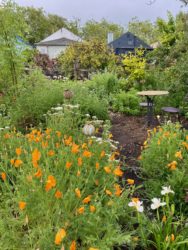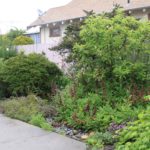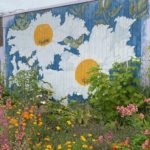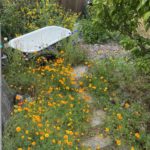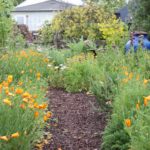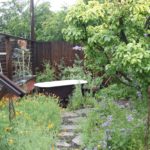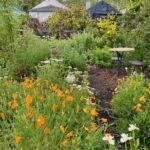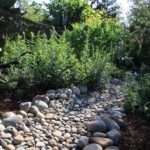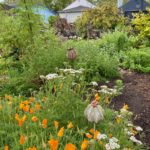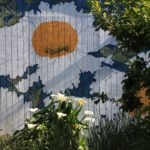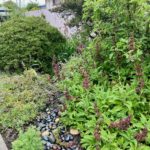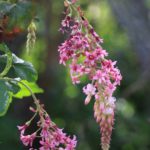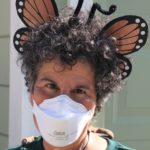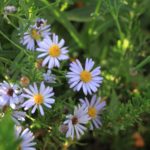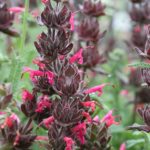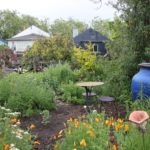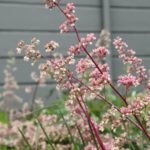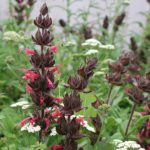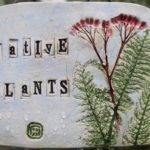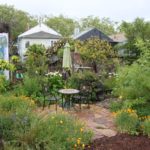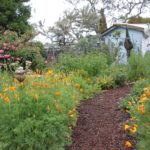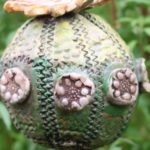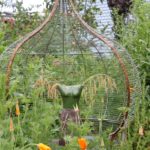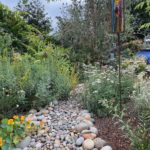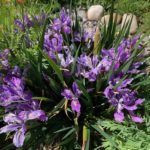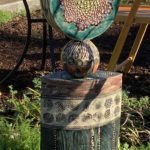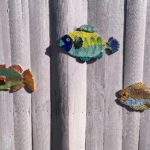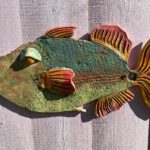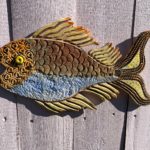Lot size: 100 sq. ft. front, 40 sq. ft. parking strip, 500 sq. ft side and 1,000 sq. ft. back garden; 90% native
Garden Age: The side garden was planted in 2011; the front, parking strip, and back gardens were planted in 2020
Years on the Bringing Back the Natives Garden Tour:
Showcase Feature
Before its amazing transformation the front garden was an overgrown jumble of non-native shrubs; under them were about a million oxalis plants, which Ruth pulled, one by one. (Tip! The time to pull oxalis is as soon as you can identify it; before it has had time to make more corms – those little brown nuts you find in the ground that will produce more plants.)
Lauren Iverson designed, and she and Ruth installed, the new petite front garden and parking strip, and the large back yard. Are you starting from truly scratch? If so, take heart: Ruth’s garden shows how one can create an attractive, water-conserving landscape that provides food, shelter, and nesting areas for wildlife and is also pleasing to two-legged visitors—no matter how dismal the original landscape was.
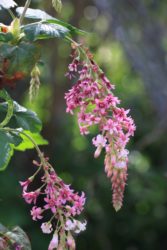 The beautiful side garden, in front of a 110 year old Berkeley cottage, was installed ten years ago. It contains mature California lilac, Santa Cruz island buckwheat, and a lilac verbena ‘de la Mina’—which is in flower most of the year—along with an understory of fragrant hummingbird sage, and an incredibly prolific ‘Gordon’ apple.
The beautiful side garden, in front of a 110 year old Berkeley cottage, was installed ten years ago. It contains mature California lilac, Santa Cruz island buckwheat, and a lilac verbena ‘de la Mina’—which is in flower most of the year—along with an understory of fragrant hummingbird sage, and an incredibly prolific ‘Gordon’ apple.
The back garden was, until recently, a total wreck. Ruth and Lauren dismantled the rotting raised beds, and removed what seemed like tons of over-grown non-native shrubs and masses of oxalis and wild garlic. The charming and peaceful garden Ruth and Lauren created behind the house contains an eclectic collection of non-native ornamentals that are keeping the garden interesting while many of the native plants – currently small – grow in, and a variety of fruit trees (plum, pomegranate, persimmon, lime, fig, Kumquat, and lemon).
Other Garden Attractions
• Ruth painted the amazing Matilija poppy on the garage wall in the back garden; she also drew the chalk art on the garage doors.
• Nature bathers will enjoy the clawfoot tub tucked cozily into a corner of the back garden.
• Attention DIYers! Ruth and a friend laid the attractive flagstone patios in the back garden themselves.
• Mason bee boxes wait hopefully for inhabitants. (Edible gardeners 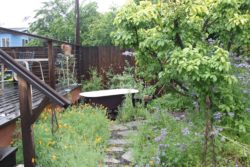 alert—you’ll double your fruit set if mason bees nest in your garden.)
alert—you’ll double your fruit set if mason bees nest in your garden.)
• Drop down in one of the many seating areas and enjoy this tranquil haven.
Gardening for Wildlife
The layering of plants, from the redbud and elderberry trees to mid-sized shrubs, such as California lilac, to lower-growing natives such as coyote mint and yarrow, provides shelter for wildlife. Butterflies adore the goldenrod and Santa Cruz buckwheat; songbirds glean seeds from the purple needlegrass, deergrass, and June grass; hummingbirds sip nectar from the California fuchsia. Native bees are attracted to the California lilac.
Keystone species (watch this talk by Doug Tallamy!)
Keystone species—our own, local ecological powerhouse plants— in this garden include vine maple, golden currant, California lilac, goldenrod, creambush, mountain mahogany, and elderberry.
At least partially wheelchair accessible? Yes
Wondering what to make for dinner? Try this great recipe!
Roasted Plum Ice Cream, recipe from “A Cozy Kitchen,”and the photograph was taken by Max Falkowitz
Note from Ruth, who provided this recipe: “Got plums? “As much as I enjoyed sharing plum crisps with everyone, my prolific Santa Rosa plum tree pushed me to be more creative. I love this Roasted Plum Ice Cream recipe as much for the color as the taste. Throwing in more plums than were called for, it was a bit tart, so I added tiny chocolate morsels for sweetness and contrast. An old Donvier ice cream maker did the job quite well.”


